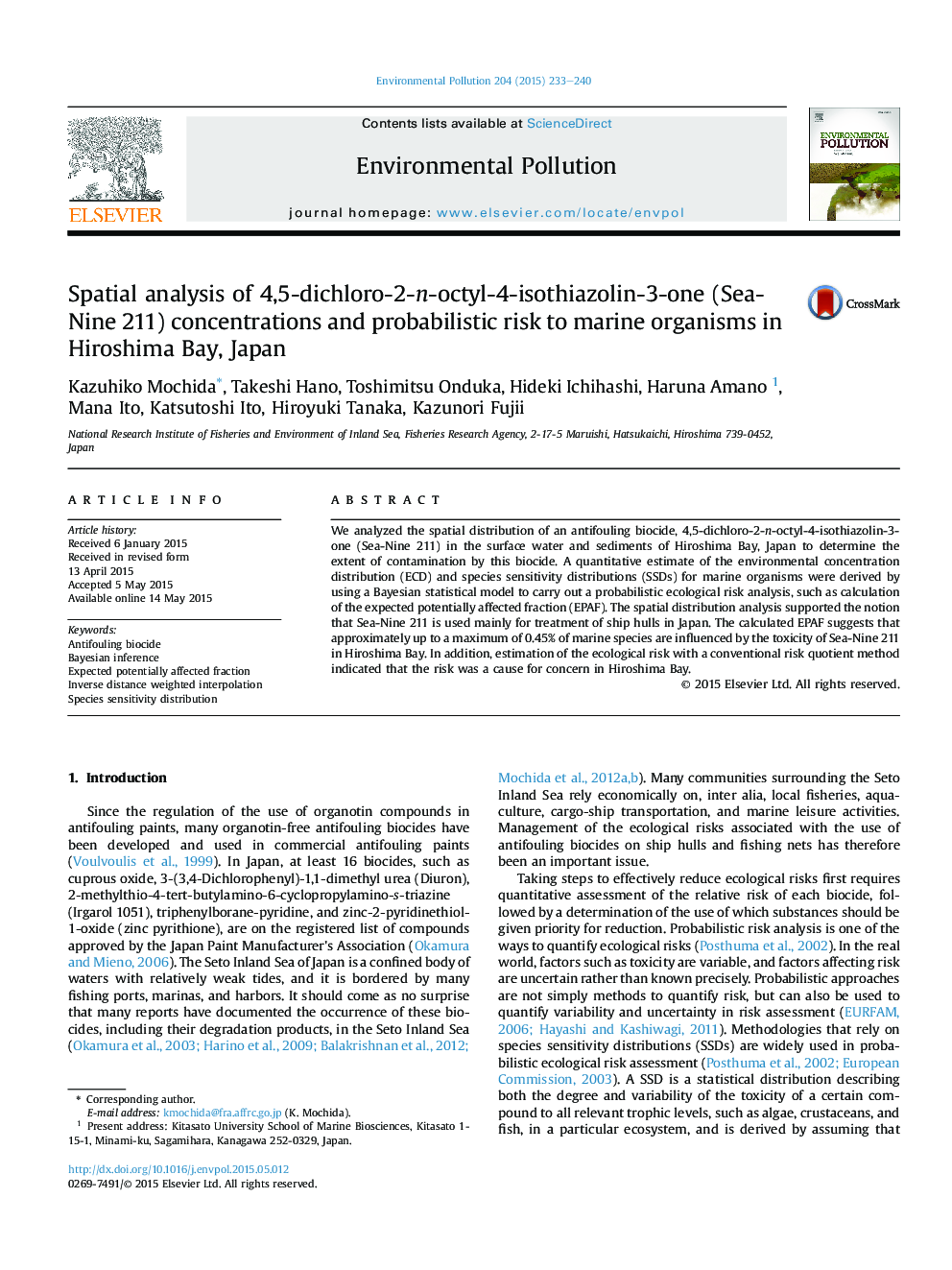| Article ID | Journal | Published Year | Pages | File Type |
|---|---|---|---|---|
| 6317236 | Environmental Pollution | 2015 | 8 Pages |
Abstract
We analyzed the spatial distribution of an antifouling biocide, 4,5-dichloro-2-n-octyl-4-isothiazolin-3-one (Sea-Nine 211) in the surface water and sediments of Hiroshima Bay, Japan to determine the extent of contamination by this biocide. A quantitative estimate of the environmental concentration distribution (ECD) and species sensitivity distributions (SSDs) for marine organisms were derived by using a Bayesian statistical model to carry out a probabilistic ecological risk analysis, such as calculation of the expected potentially affected fraction (EPAF). The spatial distribution analysis supported the notion that Sea-Nine 211 is used mainly for treatment of ship hulls in Japan. The calculated EPAF suggests that approximately up to a maximum of 0.45% of marine species are influenced by the toxicity of Sea-Nine 211 in Hiroshima Bay. In addition, estimation of the ecological risk with a conventional risk quotient method indicated that the risk was a cause for concern in Hiroshima Bay.
Related Topics
Life Sciences
Environmental Science
Environmental Chemistry
Authors
Kazuhiko Mochida, Takeshi Hano, Toshimitsu Onduka, Hideki Ichihashi, Haruna Amano, Mana Ito, Katsutoshi Ito, Hiroyuki Tanaka, Kazunori Fujii,
